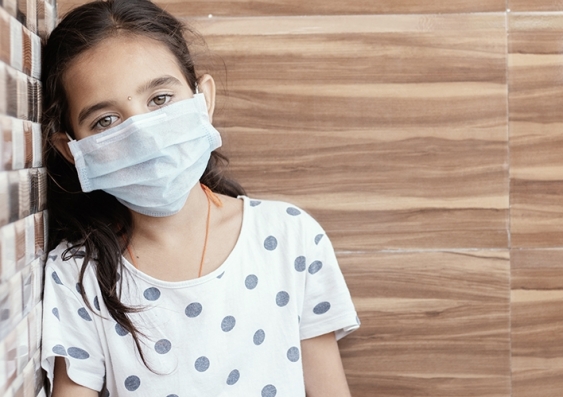Kids' use of mental health services surges following 2020 lockdown
Hospital data reveals an increased use of children’s mental health services after Sydney’s first lockdown in 2020.
Hospital data reveals an increased use of children’s mental health services after Sydney’s first lockdown in 2020.

Lachlan Gilbert
UNSW News & Content
(02) 9065 5241
lachlan.gilbert@unsw.edu.au
More children and adolescents used hospital mental health services in NSW following the 2020 COVID-19 lockdown than in the years prior to the pandemic, new research into paediatric hospital services has shown.
The researchers say the study shows we need sustained and targeted mental health services for children and adolescents now – and beyond the pandemic.
In a joint study between UNSW Sydney and the Sydney Children’s Hospitals Network (SCHN), researchers compared the observed and predicted numbers of children’s admission to inpatient services and hospital emergency departments (ED) between January 2020 and February 2021.
Using data collected from hospital records in the years 2016 to 2019, the researchers were then able to observe how the use of various health services offered by hospitals changed during the pandemic.
They found that once lockdown was implemented in March 2020, there was a noticeable drop overall in hospital admission and ED attendance for chronic conditions, acute infections and injury.
In the study published today in The Lancet Regional Health – Western Pacific, researchers surmised that for infectious and respiratory conditions, it made sense to see a drop in admissions due to social distancing and isolation. Hospital admissions and ED attendance in these categories plummeted by 40 to 78 per cent during the 2020 lockdown – or around 2000 fewer admissions and ED attendances per month.
But not all health conditions followed the downward trend in health service usage. Mental illness and cancer were two conditions that appeared to remain unchanged.
When lockdown ended after two months in late May 2020 and restrictions began to be eased, overall paediatric hospital and ED admissions returned to pre-COVID-19 levels by June 2020, reinforcing the idea that lockdown had an observable effect on hospital admissions and ED attendances generally.
However, the use of children’s mental health related services (including ED admissions) rose sharply beyond pre-pandemic levels once lockdown ended. Not only did the number of children accessing mental health rise, but they stayed elevated for the remainder of the study period.
“When we compared the actual number of children and adolescents using hospital mental health services with the predicted number based on the pre-pandemic data, they were up by 30 to 55 per cent from June 2020 to February 2021,” study lead author Dr Nan Hu says.
“This equates to a rise of an average of 110 mental health related inpatient admissions and ED attendances per month between June 2020 and February 2021 when compared to the predicted numbers using the data from the years 2016-19 in our study.”
When the researchers examined this cohort more closely, they discovered that of the children who sought mental health services, the majority were female, aged 12 to 17, and from socio-economically advantaged backgrounds.
Dr Hu says there isn’t enough detail in the data to explain either the surge in mental health demand at hospitals, nor the particular demographics of those that sought these services, but he wonders whether a few flow-on effects from lockdown could be at play.
“The increase in mental health related service use should be understood in the context of a steady increase in mental health difficulties and related health service use among children and adolescents over the last decade in Australia,” he says.
“The unintended consequence of the lockdown measures such as social isolation and reduced access to school and community services have potentially exacerbated the long-standing issues faced by the young people.”
As to why more children using hospital mental health services appeared to come from advantaged backgrounds, Dr Hu and colleagues say without data from local GPs seeing children for mental health issues, it is difficult to pinpoint exactly.
“One possible reason for this could be that there was reduced access to community mental health specialists that would otherwise be available to children in these advantaged areas in pre-pandemic times,” Dr Hu says.
“But we really would need more data from other sources like GPs and schools, and it’s something we’re interested at looking at in future studies.”
Study senior author Professor Raghu Lingam, Professor of Paediatric Population Health at UNSW and consultant paediatrician with SCHN, says the findings can inform how health services can respond to the mental health needs of young people as the pandemic unfolds.
“We believe this work highlights the real need for sustained and targeted delivery of mental health services for children and adolescents during and beyond the pandemic,” he says.
“We need more monitoring of direct and indirect outcomes among children as the pandemic evolves in years to come.”
The researchers will next be looking at extending their study parameters to include hospital data collected during the second lockdown up until September 2021, while also incorporating paediatric data from GPs which they hope will provide a clearer understanding of how the pandemic has affected the use of health services for children and adolescents.